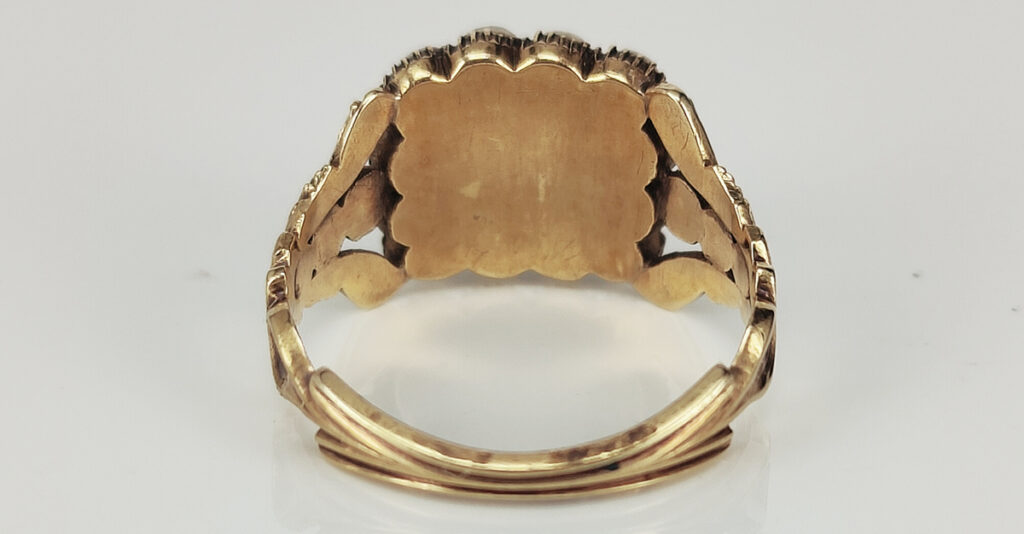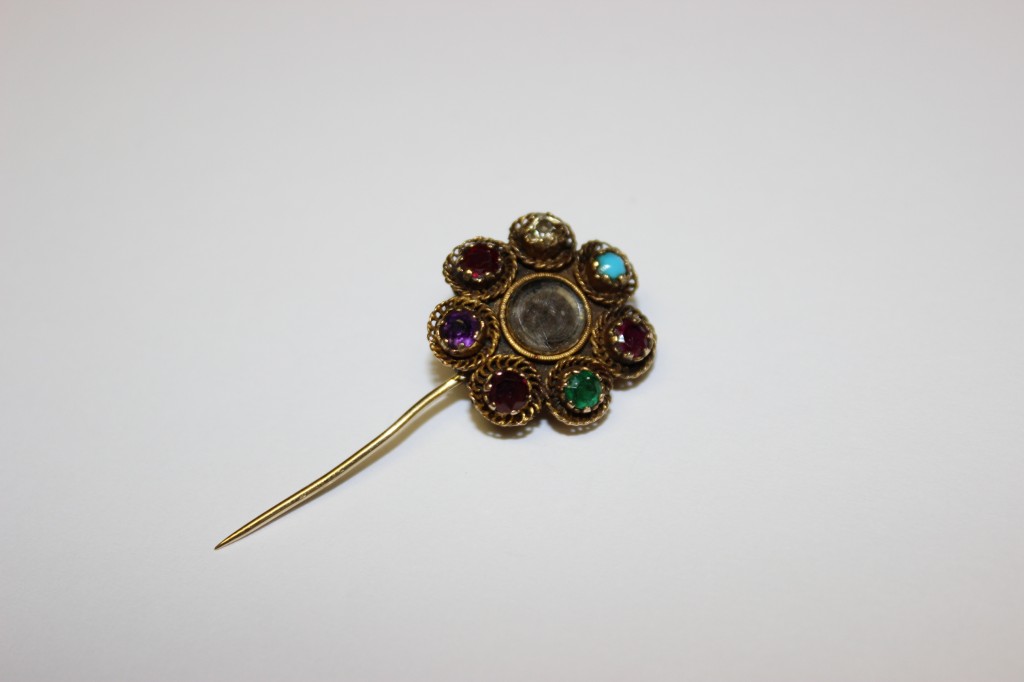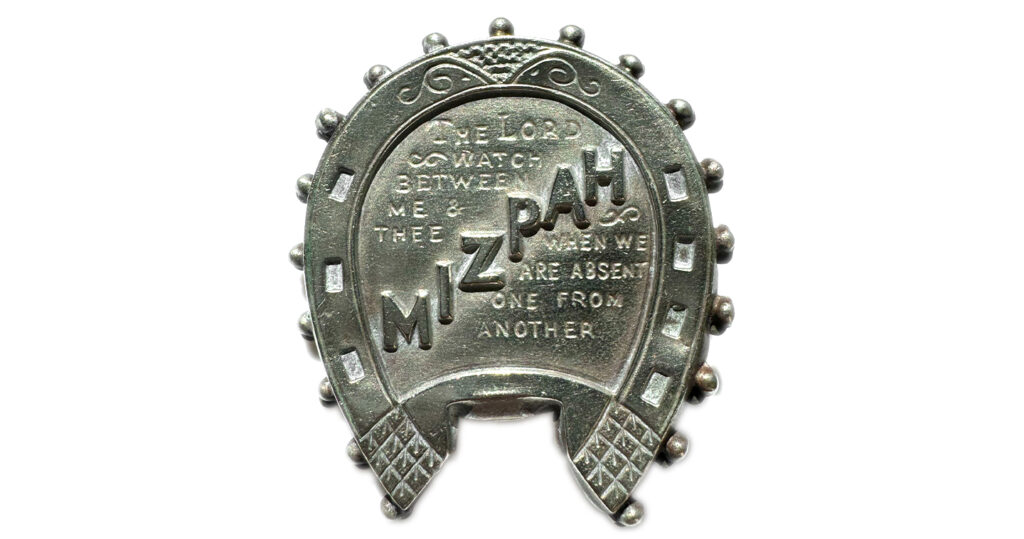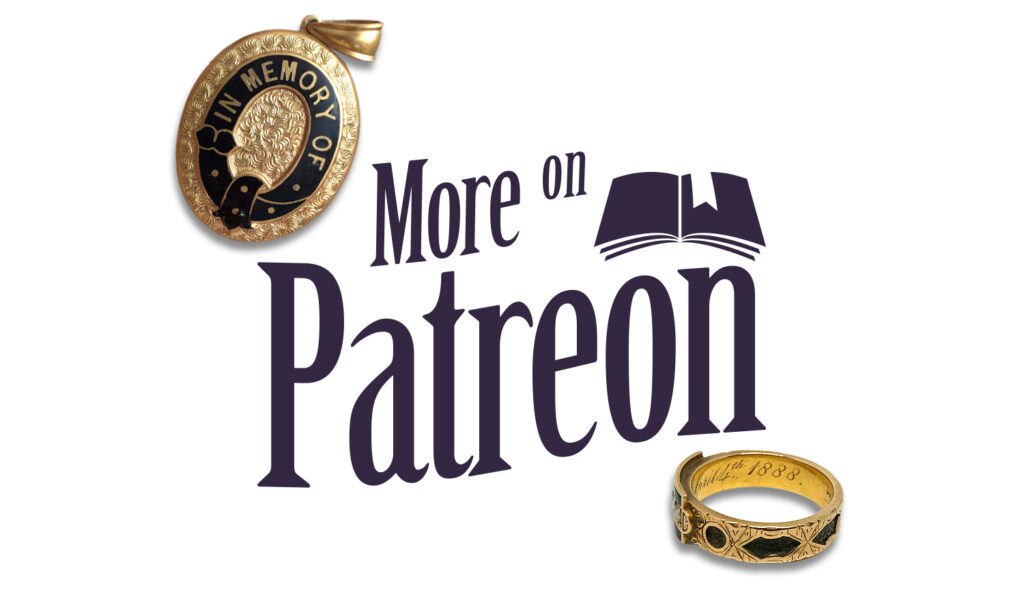Religious Values in 19th Century Jewellery Design

Sentimental and morning rings hold the same value of love and memory. It does not matter if the subject is alive or dead, the keepsake is a token of memory and that’s what will always keep the individual alive if they are near or far.
Family values are incredibly important to evaluate when viewing this ring. British society was going through a massive change to react against many of the indulgences seen in the behaviour of George IV and the upper classes. The wealthy elite was now in its second generation, where the massive inheritances were being spent on personal indulgences, art, architecture, fashion and products. The Industrial Revolution had created urbanisation and workforce culture, which had little regulation to protect men, women and children. Close communities that could communicate together could destabilise governments through shared hardships. Rapid transit and the industrial powered printing press offered new ways to disseminate information and spread that widely throughout Europe. Society needed to bring back the Christian values which had been valued in Medieval times, where chivalry, romance art and craft forged what was seen as a more moral society.

Seen in this sentimental ring from the c.1810 to c.1820 period, the Gothic Revival style is on display. This style was a counter-cultural movement against the Industrialisation of England, bringing back the Medieval values and lifestyle that had become lost. This was reflected in religious values, such as the Oxford Movement, where members, along with members of the High Church of the Church of England, tried to reinstate Catholic liturgy and theology back into practice. There was a strong feeling that the Church of England lacked the ceremony and morality of the Roman Catholic Church, so a series of publications, the “Tracts of the Times”, was published. It comprised of 90 documents of various length offering reasons why morality had slipped and why this religious value was necessary for England.
Tractarianism did not last longer than 1841, but its value was a reaction to also support the ‘Dissenters against the Church of England’, which was a sensitive subject during the late 18th and early 19th century. There was concern in Parliament about a potential revolution, which was still fresh in the popular mindset since the French Revolution of 1789 and the subsequent Terror that had been its fallout. This pressure came from Catholics in Ireland and Scotland. The Catholics had no representation in Parliament, which is why the Catholic Emancipation Act of 1829 was set to pacify a potential uprising. Begrudgingly advised by the Duke of Wellington and supported by the Prime Minister, it helped subside the upper class Irish agitants to Parliament and appealed to the anti-Industrialisation feeling that longed for the values of the Middle Ages.

Previously, the Church Building Act / Million Pound Act of 1818, provided for the expenditure of £1,000,000 on churches, emphasising Gothic as the ecclesiastical style, which culturally built into this imagery of earlier times in holy worship. Jewellery design relates strongly to these values of the Medieval, looking for stability in dominant design and nothing in jewellery can worship more highly than that of mourning.

The Baroque motifs that reemerged during the Gothic Revival can be seen in the shoulders and the band of this ring. Its rose and acanthus designs are a common flourish in Baroque patterns and these would remain in mourning and sentimental jewel design through to the 1850s. This ring’s use of pearl and turquoise is another element of the early 19th century, where gems became far cheaper following the French Revolution and aristocratic homes were looted, the gold taken and many gems sold off throughout Europe.

Colour theory and the ‘magical properties of gems’ as a philosophy applied to the colour spectrum. Each colour had a certain emotion and a meaning, which made gems incredibly popular in sentimental jewels. Just the same as hair, they were cheap and meaningful, to the extent that paste (foiled glass) was used in acrostic jewellery; commonly in ‘REGARD’ (ruby, emerald, garnet, amethyst, ruby, diamond) and ‘DEAREST’ (diamond, emerald, amethyst, ruby, emerald, sapphire, topaz).
The ring featured in this article appears courtesy of Kalmar Antiques, who you can find on Instagram, Twitter and on their website.






